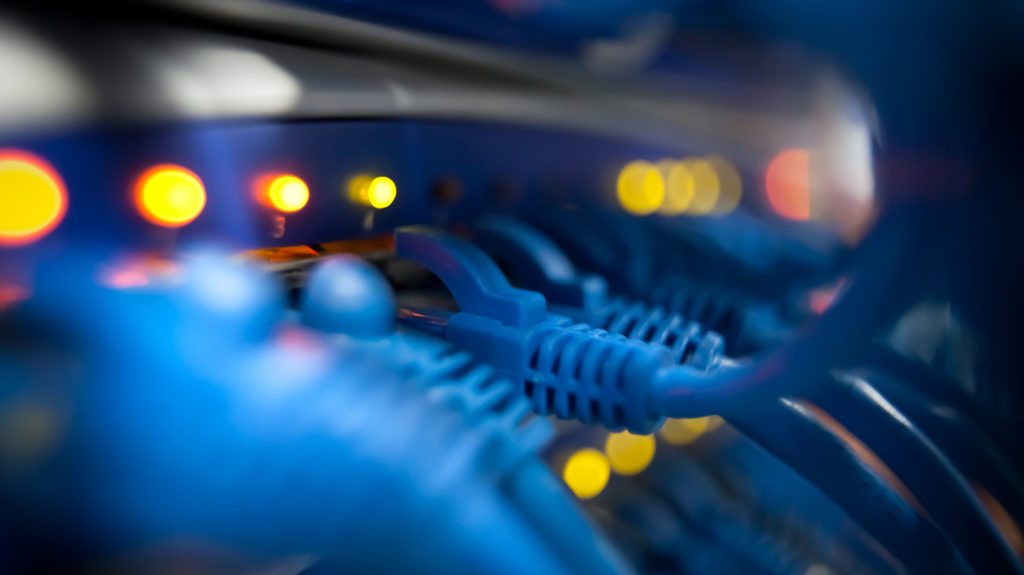What you need to know about your digital footprint

The explosive growth of our digital lives is consuming energy at a phenomenal rate – with potentially disastrous consequences for the climate.
As any good carbon footprint calculator will tell you, how often you fly, whether you recycle, what you eat, where you shop and how you commute all impact on the climate.
But less well understood is another major source of greenhouse gas emissions: our interactions online. This digital carbon footprint is generated by our use of smartphones, laptops, tablets and a myriad of other digital devices.
The common perception that digital products and services are “carbon light” and clean is wrong.
No device is an island
It is true that charging a smartphone requires only a small amount of electricity. But when we come to actually use one – to stream a video, for example – our smartphone has to send requests to numerous servers, located around the world.
This is what makes digital devices so different to other electrical appliances. When you turn on an electric light it doesn’t cause dozens of lights elsewhere to illuminate. In the digital universe, however, no device is an island – they are communicating to each other all the time, gobbling up energy, even when in standby mode.
Mark Mills, CEO of the Digital Power Group, has estimated that our Information-Communications-Technologies (ICT) ecosystem now uses about 10 percent of the world’s total electricity generation.
Some consider Mills’s 2013 figure to be too high. But one thing is certain: the rapid growth of the cloud and our use of the internet are producing a huge and rapidly increasing demand for electricity, most of which is generated by burning fossil fuels.
“The transition to online distribution models, such as video streaming, appears to deliver a reduction in the carbon footprint over traditional models of delivery,” says Greenpeace in its Clicking Green: A Guide to Building the Green Internet report, released this month.
“However, in some cases, this shift may simply be enabling much higher levels of consumption, ultimately increasing the total amount of electricity consumed and the associated pollution from electricity generation.”
What consumers need to know
A baby born today can have a digital carbon footprint stretching back to before its birth (think of all those ultrasound scans uploaded to Facebook by proud parents).And as that child grows up, the digital universe will touch on almost everything it does.
In the mid-1990s, an average consumer might have owned a computer and perhaps a games console. Today you can add children’s toys, digital TV set-top boxes and wireless speakers to the list, plus of course the ubiquitous smartphones, laptops and tablets.
In 2013, the number of digital devices in the world stood at around 14 billion. The International Energy Agency thinks that number could skyrocket to 500 billion by 2050.
Greenpeace’s Clicking Green report suggests the online population topped 3 billion last year, while mobile broadband subscriptions are expected to jump to a staggering 7.6 billion by 2020.
What can you do to reduce your footprint?
- Turn off devices when you’re not actively using them.
- Consider cutting down your digital consumption – if you can go without meat for a couple of days a week, why not ration YouTube too?
- Consider what device you are using.
- Browsing The Guardian website using a laptop over Wi-Fi uses double the energy compared to using a tablet while a smartphone connected to 3G uses even less energy. See the research here.
What companies need to know
From coffee machines to CAT scanners, elevators to ATMs, our workplaces too are now packed with digital devices that use a constant stream of power.
Energy efficiency is a particular concern, however, when we look at the tens of thousands of data centres that have sprung up around the world.
Data centres are the factories of the 21st century, sometimes gargantuan facilities which house computer systems and support what we know as “the cloud”.
They require huge amounts of power, both to run the equipment they use and to cool it. And all too often those massive energy demands have been met by fossil fuels.
The Guardian’s digital emissions in 2013-14 were up 25 percent on the year before and accounted for more than 21 percent of its total carbon footprint, compared to 61 percent accounted for by its newspaper printing operations. Its carbon efficiency fell as it expanded digital operations to the US and Australia, where electricity companies use more coal than in the UK.
Greenpeace’s report offers hope by highlighting the “growing number of companies [which] have begun to create a corner of the internet that is renewably powered and coal free.”
Those major companies include Google, Apple and Facebook. And they have been driving renewable power by:
- Increasing transparency through publishing their energy and carbon footprint data
- Committing to being 100 percent renewably powered
- Using their influence to push utilities and policymakers to invest in renewable energy
Other technical fixes include bundling servers together, locating them in cooler climes and introducing power management features.
Things will not change overnight. According to Greenpeace, there is continued resistance to renewable investments from stubborn, coal-dependent power companies. But if companies around the world follow Apple and Google’s example, Greenpeace says the internet “has the potential to serve as a critical foundation for sustainable economic growth.”
Meanwhile, perhaps now is a good time for the rest of us to try the WWF environmental footprint calculator or one like it and remind ourselves of the impact our personal choices.
But remember: most online calculators do not cover our digital lives. There is far more to your carbon footprint than planes, trains and automobiles.
This article originally appeared on Allianz.







